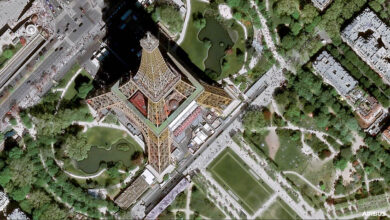ISRO-Aditya L1 Fourth Manoeuvre
- ISRO successfully conducts fourth Earth-bound Manoeuvre on Aditya L1
- Fourth Earth-bound manoeuvre (EBN#4) is performed successfully. The new orbit attained is 256 km x 121973 km
- The Aditya-L1 mission’s next manoeuvre Trans-Lagragean Point 1 Insertion is scheduled for September 19
Bangalore, September 15. The fourth Earth-bound manoeuvre of the Aditya-L1 mission has been performed successfully in the early hours of September 15. “Aditya-L1 Mission: The new orbit attained is 256 km x 121973 km.

ISRO’s ground stations at Mauritius, Bengaluru, SDSC-SHAR and Port Blair tracked the satellite during this operation, while a transportable terminal currently stationed in the Fiji islands for Aditya-L1 will support post-burn operations. The new orbit attained is 256 km x 121973 km,” ISRO posted on X (formerly Twitter).
The next manoeuvre Trans-Lagragean Point 1 Insertion (TL1I)— a send-off from the Earth— is scheduled for September 19, 2023, around 02:00 Hrs. IST
After the final manoeuvre on September 19, Aditya-L1 undergoes a Trans-Lagrangian1 insertion manoeuvre, marking the beginning of its 110-day trajectory to the destination around the L1 Lagrange point. Upon arrival at the L1 point, another manoeuvre binds Aditya-L1 to an orbit around L1, a balanced gravitational location between the Earth and the Sun. The satellite spends its whole mission life orbiting around L1 in an irregularly shaped orbit in a plane roughly perpendicular to the line joining the Earth and the Sun.
The Aditya-L1, India’s first solar observatory mission was been successfully launched by the Indian Space Research Organisation (ISRO) on September 2 from the Satish Dhawan Space Centre in Sriharikota.
Aditya L1 is the first space based Indian mission to study the Sun. The spacecraft shall be placed in a halo orbit around the Lagrange point 1 (L1) of the Sun-Earth system, which is about 1.5 million km from the Earth.
A satellite placed in the halo orbit around the L1 point has the major advantage of continuously viewing the Sun without any occultation or eclipses. This will provide a greater advantage of observing the solar activities and its effect on space weather in real time.
The spacecraft carries seven payloads to observe the photosphere, chromosphere and the outermost layers of the Sun (the corona) using electromagnetic and particle and magnetic field detectors.
Using the special vantage point L1, four payloads directly view the Sun and the remaining three payloads carry out in-situ studies of particles and fields at the Lagrange point L1, thus providing important scientific studies of the propagatory effect of solar dynamics in the interplanetary medium.
The suits of Aditya L1 payloads are expected to provide most crucial information to understand the problem of coronal heating, coronal mass ejection, pre-flare and flare activities and their characteristics, dynamics of space weather, propagation of particle and fields.





